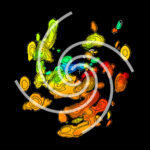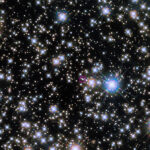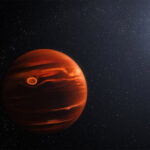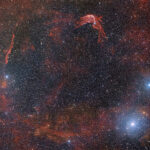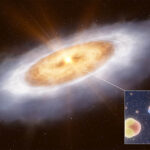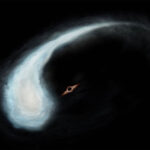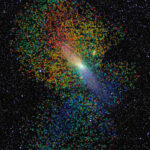Playing Connect-the-dots Around a Baby Star
Have you ever played connect-the-dots in a magazine? At first, it looks like a mess - but after you figure out how to connect the points, a pattern appears out of the chaos. Recently, astronomers noticed a mysterious spiral pattern hiding around a baby star. But instead of ‘dots’, the…
NASA Missions Study What May Be a 1-In-10,000-Year Gamma-ray Burst
On Sunday, Oct. 9, 2022, a pulse of intense radiation swept through the solar system so exceptional that astronomers quickly dubbed it the BOAT – the brightest of all time. The source was a gamma-ray burst (GRB), the most powerful class of explosions in the universe. The Hubble Space Telescope’s…
Webb spots swirling, gritty clouds on remote planet
Researchers observing with the NASA/ESA/CSA James Webb Space Telescope have pinpointed silicate cloud features in a distant planet’s atmosphere. The atmosphere is constantly rising, mixing, and moving during its 22-hour day, bringing hotter material up and pushing colder material down. The resulting brightness changes are so dramatic that it is…
Blast from the Past!
Behold! the traces of the first-ever supernova recorded in history! A ring of glowing remains of the first-ever recorded supernova, a white dwarf star that exploded more than 1800 years ago. Credit: CTIO/NOIRLab/DOE/NSF/AURA Rector (University of Alaska Anchorage/NSF’s NOIRLab), J. Miller (Gemini Observatory/NSF’s NOIRLab), M. Zamani & D. de Martin (NSF’s NOIRLab).…
Astronomers find missing link for water in the Solar System
Using the Atacama Large Millimeter/submillimeter Array (ALMA), astronomers have detected gaseous water in the planet-forming disc around the star V883 Orionis. This water carries a chemical signature that explains the journey of water from star-forming gas clouds to planets, and supports the idea that water on Earth is even older…
A Bird? A Plane? A Tadpole?
On a sunny day with a blue sky filled with clouds, try stepping out into your garden or go for a walk. Now look at the clouds above. Use your imagination and try to make out as many interesting patterns or shapes that you can see — like a sky…
Surprise Surprise! Stars Moving into Another Galaxy
Life is unpredictable, and you never know when the next exciting adventure comes knocking at your door. Sometimes it might require you to pack your bags and move to another town or a new country altogether. Guess what! You are not alone: stars do it, too! Striking new evidence for…

